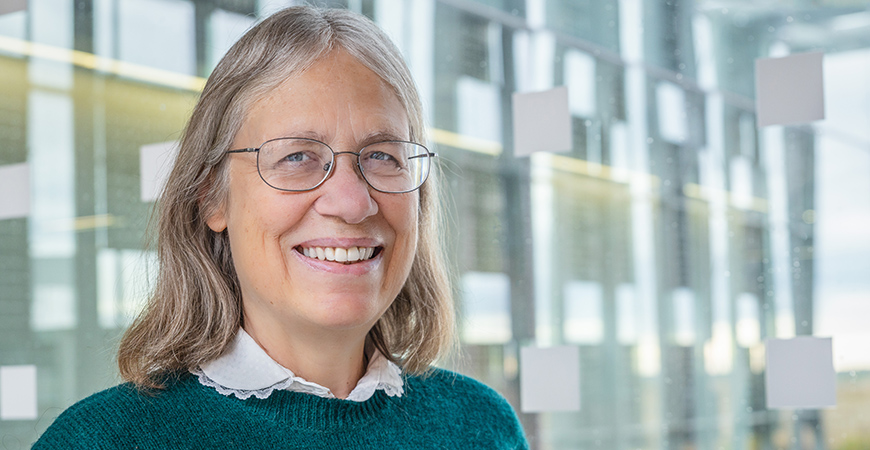
Not spending money on gas, oil changes, and tune-ups and not producing harmful greenhouse gas emissions is enough to sell many people on plug-in electric cars.
But many consumers won’t bite until they’re assured that electric cars can go the distance before needing a charge.
Some California cities are well on the way to helping the state become a green leader in transportation. In Los Angeles, about 100,000 electric vehicles are on the road, and every day, people take 1.2 million rides on the L.A. Metro’s electric subway, electric light-rail, and buses, according to an article in GreenBiz.com.
UC Merced Professor Sarah Kurtz said new methods of solar-energy integration have the potential to help Californians use more renewable energy, from meeting the needs of electric car buyers to solving future challenges the state of California could face in producing the 100 percent renewable electricity the law requires by 2045.
Kurtz is overseeing a graduate-student project comparing the efficiency of different solar-cell technologies when installed on car roofs — research that could advance efforts to use solar panels on electric cars to recharge their batteries.
“Electric vehicles are becoming more popular,” Kurtz said. “If we can do it in a cost-effective way, it’s a great idea to put solar panels on the roofs of electric cars so they would just charge themselves in the sun. The challenge is that the solar panels only give a small boost, so we are testing solar panels that would provide a bigger charge.”
Kurtz said “range anxiety” — the concern over how far an electric vehicle can be driven before needing a charge — could be reduced by having solar panels on a car roof. “The worst case, if the car runs out of charge, is to pull over and take a nap while the car recharges itself,” Kurtz said.
Kurtz was a researcher and project manager at the National Renewable Energy Laboratory in Golden, Colo., for 30 years before joining the faculty in the Department of Materials Science and Engineering (MSE) in the School of Engineering and UC Solar in 2017. She welcomes any chance to explore how solar technology can reduce harmful emissions from motor vehicles.
“To be part of the state of California showing the world how to move away from fossil fuels and provide energy from low carbon sources is a really exciting opportunity,” Kurtz said.
The study — commissioned by Alta Devices Inc., a Sunnyvale-based company that manufactures solar technology for mobile devices compares the efficiency of different solar cell modules on the roofs of vehicles.
The central challenge confronted by the study, Kurtz said, is potential overheating of the solar panels, which can be exacerbated by the hot interior of a car and lead to a loss of panel performance.
“Now if you’re driving down the road, this isn’t an issue because the breeze along the top will cool the panels,” Kurtz said. “But when you’re parked in a parking lot … the oven that you have inside the car actually heats up the panels. Fundamental physics tells us that when solar panels heat up, their efficiency decreases.”
"To be part of the state of California showing the world how to move away from fossil fuels and provide energy from low carbon sources is a really exciting opportunity."
Kurtz manages that project, which details the findings of her MSE graduate student Aaron Wheeler and about 10 others undergrad and grad students who helped build the data-collection setup. Kurtz said she and Wheeler, whose dissertation thesis will be partially based on this research, are preparing the study for journal publication.
The study found solar cell modules made from gallium arsenide, a compound semiconductor, “definitely outperform silicon” in that they heat up less and lose the least amount of energy due to high temperatures. Gallium arsenide is the preferred solar cell technology for orbiting satellites and, more recently, drones. But gallium arsenide is prohibitively expensive to manufacture for use in cars.
Until gallium arsenide becomes an affordable solar-cell option, it may make more sense to employ other solar-cell technology not on electric cars but on parking structures for electric cars. After all, car owners tend to avoid parking in direct sunlight — choosing parking garages or shady spots instead.
“In some ways, you’re better off putting solar panels onto carports and charge cars that way,” Kurtz said.
Roadside Solar
A second study, titled “Outdoor Performance of Photovoltaic Technologies in Simulated Automotive Environments,” is the focus of an 18-month, $250,000 project to determine how the California Department of Transportation (Caltrans) can site large-scale solar electrical generation facilities on the state’s highway right-of-ways — in the clover-leaf and diamond intersections.
The project includes funding for MSE grad student Pedro Sanchez to collect information about existing solar-electricity utilities on the roads in other states.
“We’re looking at the fraction of land typically covered by solar panel arrays at different locations so that those who want to site a new system can estimate how big it can be in a given location,” Kurtz said.
UC Merced has subcontracted the Texas A&M Transportation Institute to provide regulatory expertise and a consultant familiar with the type of public-private partnerships that could operate the solar-electricity utilities. The project is expected to conclude at the end of 2020.
“Caltrans would like to be able to understand what the challenges will be so that if there is an opportunity for a project sometime in the future, they would have the tools” Kurtz said.



